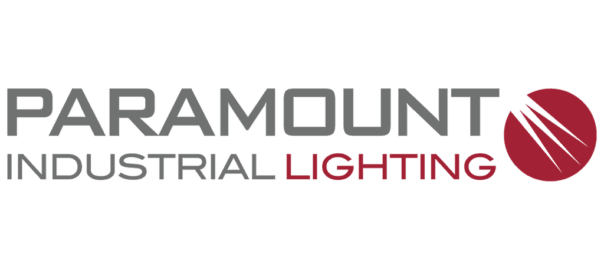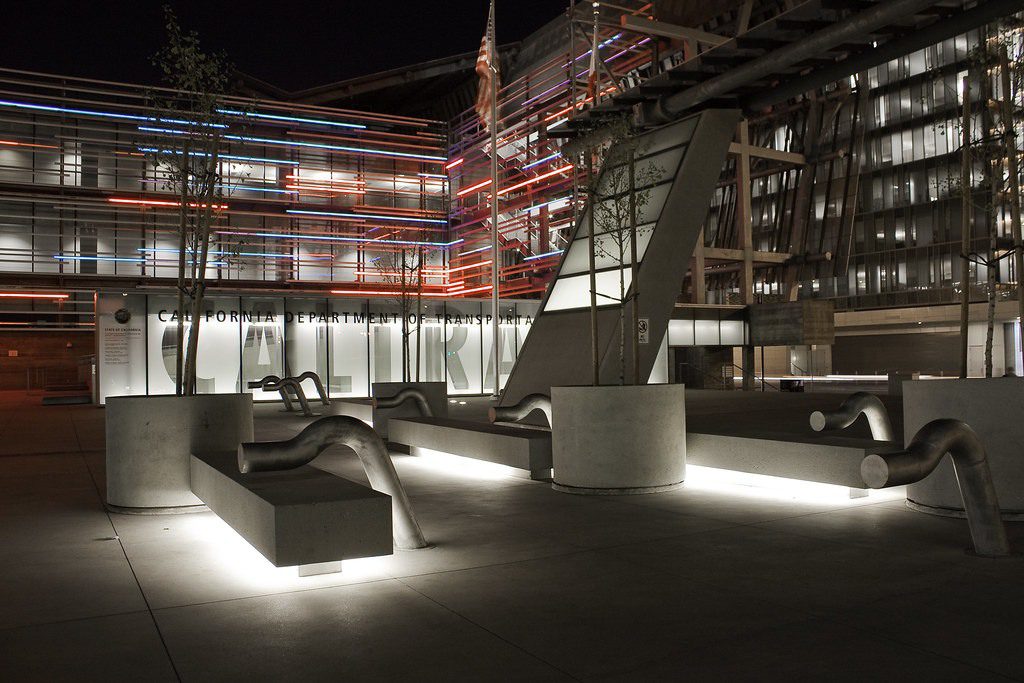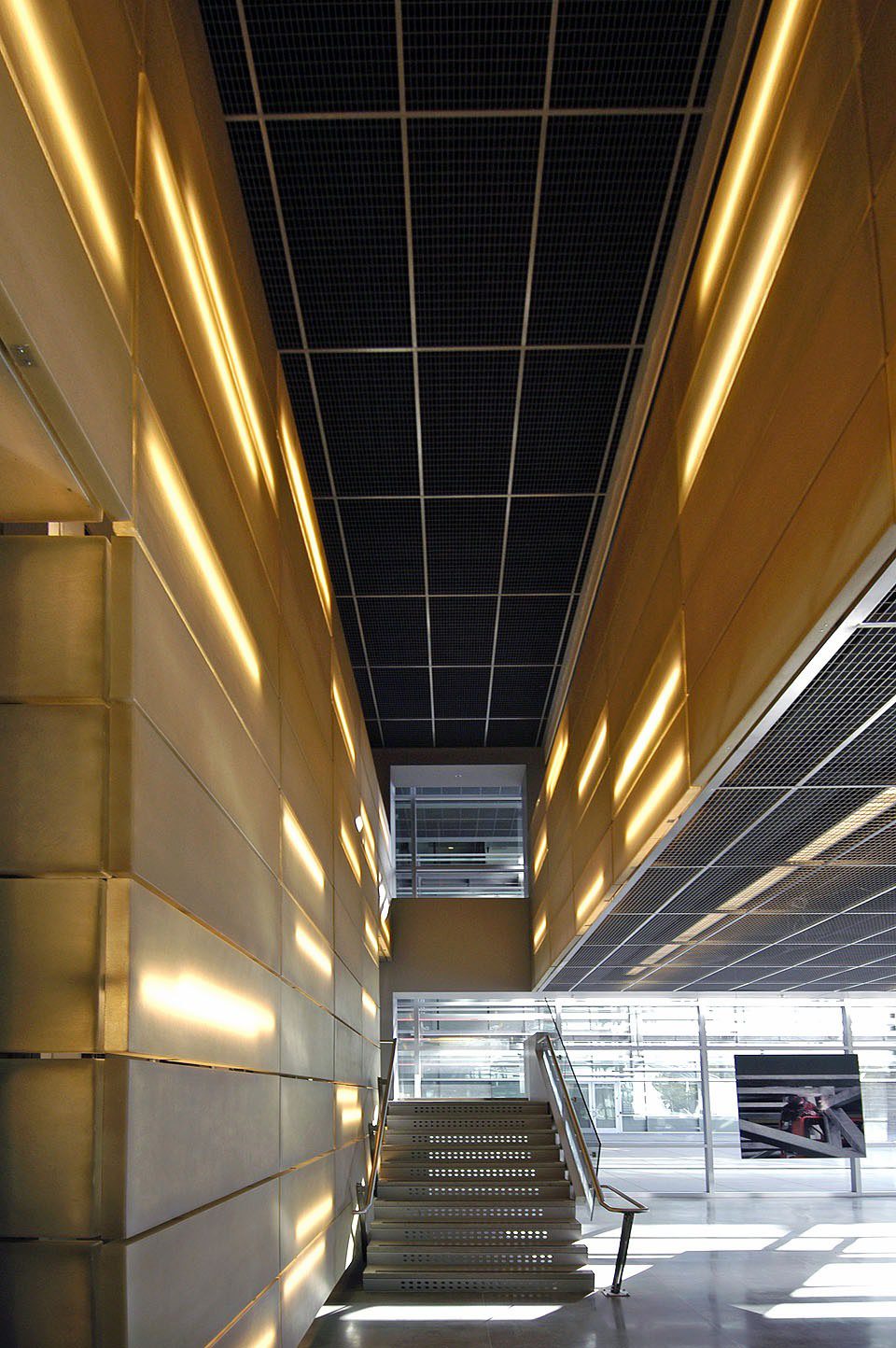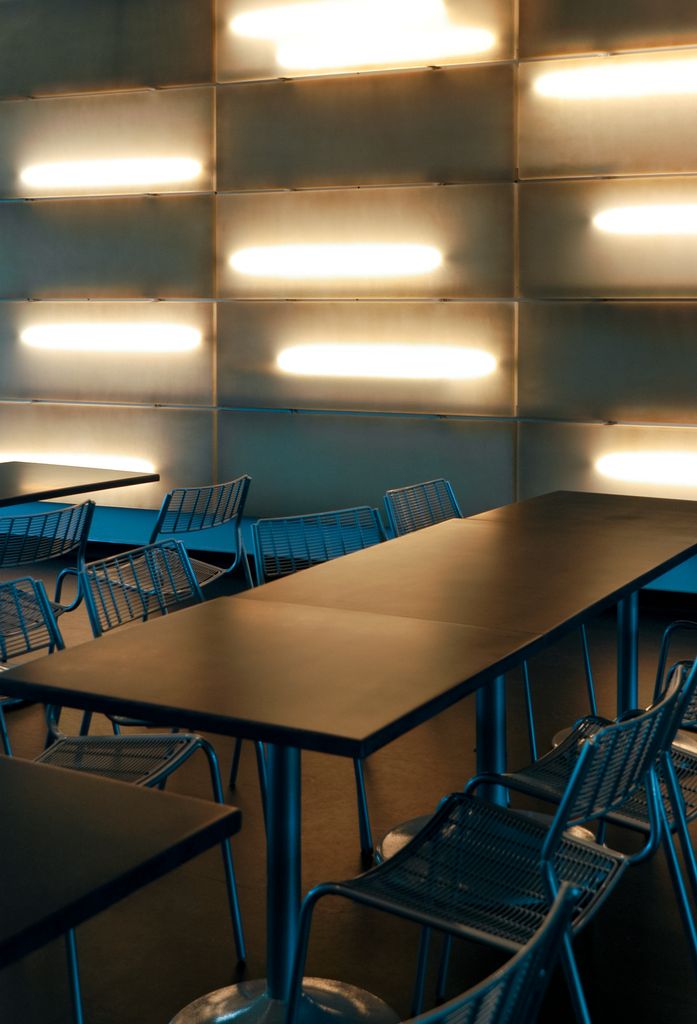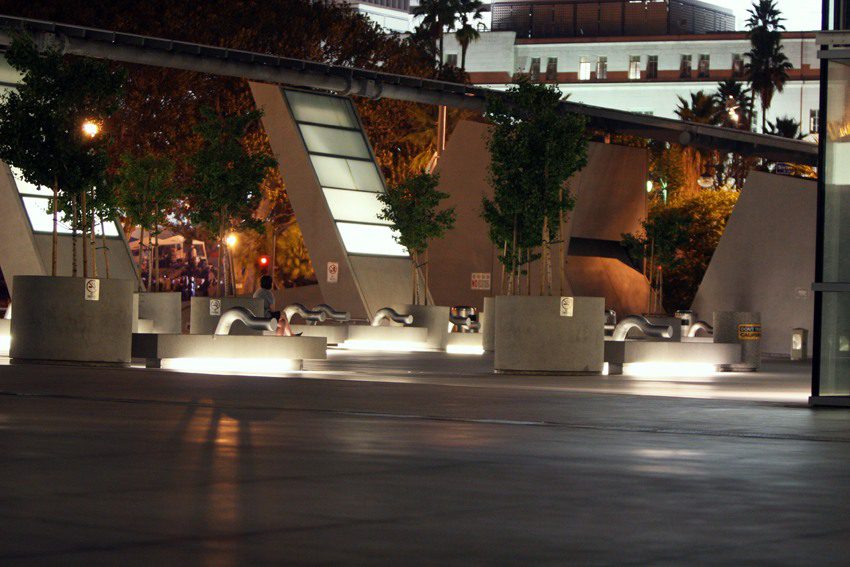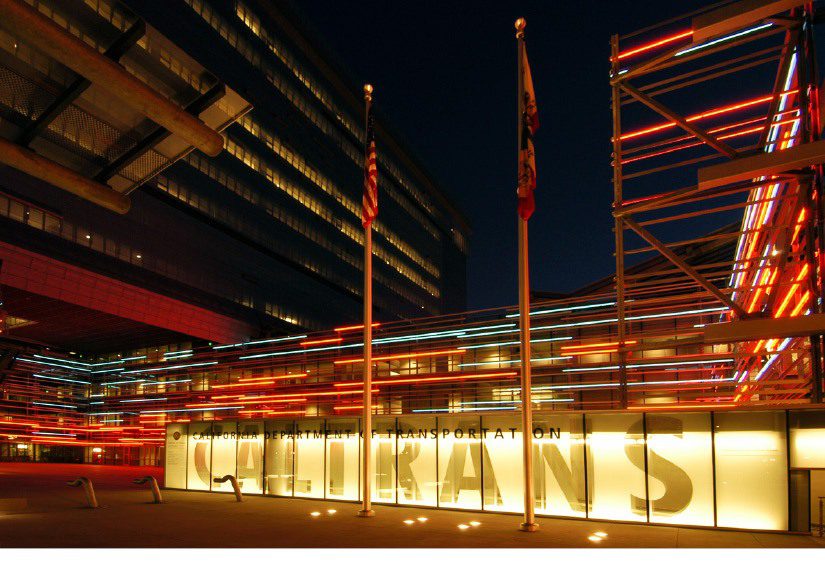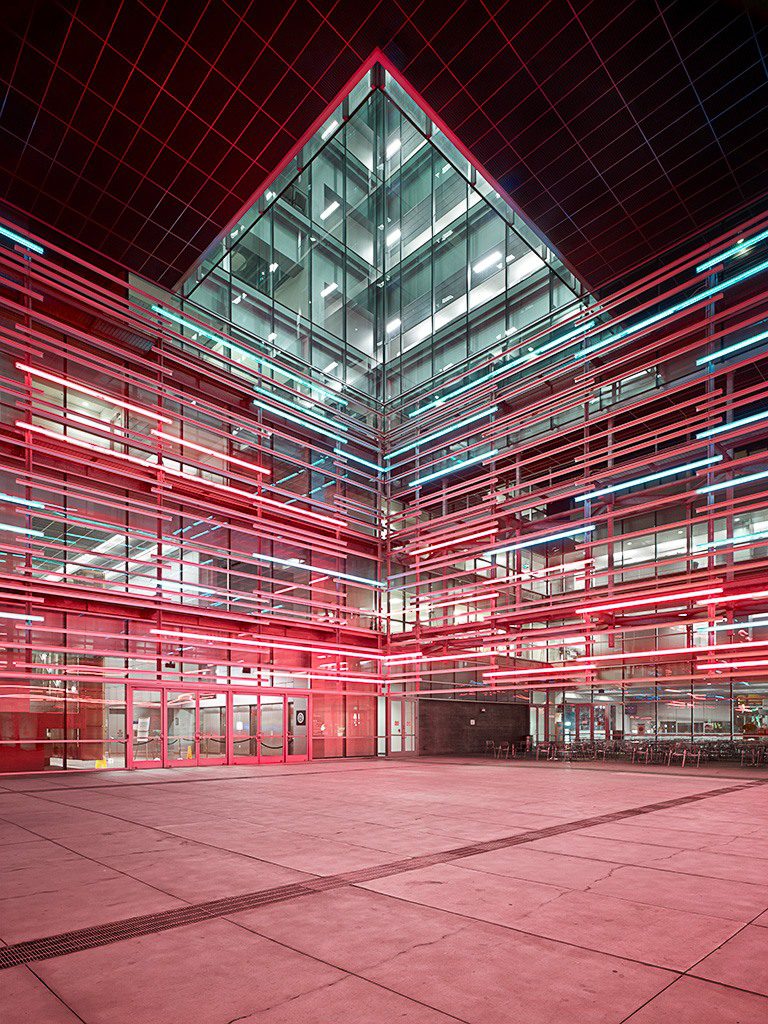Caltrans District 7 Headquarters, CA
Think of a state office building in downtown Los Angeles as a canvas on which to create significant architectural design. When the California Department of Transportation, or Caltrans, committed to building a replacement headquarters for their 7th district, they gave the canvas to architectural firm Morphosis.
Thom Mayne, who founded Morphosis, recently won the prestigious international Pritzker Prize for architecture. Working with him on the District 7 headquarters was project architect Pavel Getov and project manager Silvia Kuhle. Contracting was handled by the Clark Construction Group.
The design has been described as “planes and lines passing by each other.” It features movable panels outside the windows that can open to let in light and close to block the intense heat of full sunlight. The building itself is over 716,000 sq. ft., with offices and meeting space for the engineers and designers of the freeway system in California. The site also includes a courtyard/plaza along Main St., parking for 1,142 vehicles, and even a children’s playground along Second St.
The District 7 headquarters are located in an “emerging neighborhood” in downtown LA. For a number of years, there had been plenty of daytime activity but few visitors at night. That is beginning to change with new movement towards downtown living.
At night the structure is visible in distinct ways, thanks to the artistry of the Los Angeles office of major lighting design firm Horton Lees Brogden. This was the fourth project that HLB worked on with Morphosis. Working with principal Teal Brogden, the lighting concept for the Caltrans project was created and implemented by project manager/senior designer Heather Libonati and Emily Koonce.
This entire complex was design/build–put on fast track, it was designed and built in only two and a half years. Because of that, the budgets were determined before the lighting was designed. Interior lighting had very specific requirements, while the guidelines opened wider for outdoor lighting. To verify that the design of various building elements were kept in line with the client’s needs, expectations and budget, all building systems designs were subject to a “Systems Confirmation” series of reviews. This allowed Caltrans and representatives of the State of California as well as peer reviewers to assess the design.
The courtyard in front of the building is a perfect example of how HLB used light to create a usable and yet interesting space. Ms. Brogden described it as “a great opportunity to set the (lighting) tone for the project.” The key was to light the plaza without overpowering a 3 story high neon public art sculpture by Keith Sonnier, which had been commissioned for the site. At the same time, there had to be enough ambient light in the plaza for pedestrian safety and for security cameras.
HLB “responded to what Morphosis designed. We looked for ways to create light without the fixtures themselves having a presence,” according to Ms. Libonati. So light was bounced up off the ground plane. A mixture of luminaire types was utilized. Small floods were used under a canopy along the building side of the plaza. Fluorescent luminaires were placed inside luminous slanted walls that support a trellis around the outside of the plaza, and also placed underneath the benches scattered around the plaza.
The neon sculpture itself gave off some light, and with the other lighting, the plaza lighting design worked without any large scale standard HID floodlighting! There was, however, some emergency floodlighting set in place. Another visible design gesture was a cantilevered “Light Bar” mounted off the side of the building along First St.
For technical support, luminaire pricing and obtaining samples, HLB relied on David Paladino and Catherine McGroarty of California Lighting Sales. They worked closely with the designers on this project. For several situations around the complex, they recommended using Craft Lite® luminaires from Paramount Industries. These fluorescent units are wet location listed, compact and durable. Both Morphosis and HLB had used Craft Lite luminaires on previous projects and were confi dent of successfully using them here. Ms. Brogden described them as having a “simple, industrial aesthetic” as well as being able to handle the weather. In Systems Confi rmation review, Paramount’s luminaires won out over the considered alternatives.
A number of the effects created for the courtyard utilized the Craft Lite C2 Series. Primarily, these luminaires were used under the benches. They were also used inside the angled support walls around the outside of the plaza as well as to power the “Light Bar.”
Other places around the complex that featured Paramount’s products were the “Skip Stop” stairs inside the building. These are short runs of stairs between two floors only, rather than one continuous staircase.
To light the stairs, they were mounted to nearby walls in random patterns. To light the playground, the Craft Lite luminaires were mounted on the underside of a large trellis.
LEED certification was a prominent goal in building the new District 7 quarters. However, the plaza lighting presented a problem. Avoiding broad floodlighting effectively cut a good deal of light trespass, but the “Light Bar” and the 3 story neon sculpture made it impossible to eliminate. Since these elements were considered essential to the overall design, the LEED light pollution reduction certification was not pursued.
Finishing strokes on the entire Caltrans complex were completed in late fall of 2004. Since then, it has become a popular location for film crews and an attraction for tourists. The California Department of Transportation was pleased with the results. Ms. Brogden commented “This was a remarkable collaborative effort by a great team, all the way from the client to the person installing the lights – we feel privileged to have been a part of it.”
